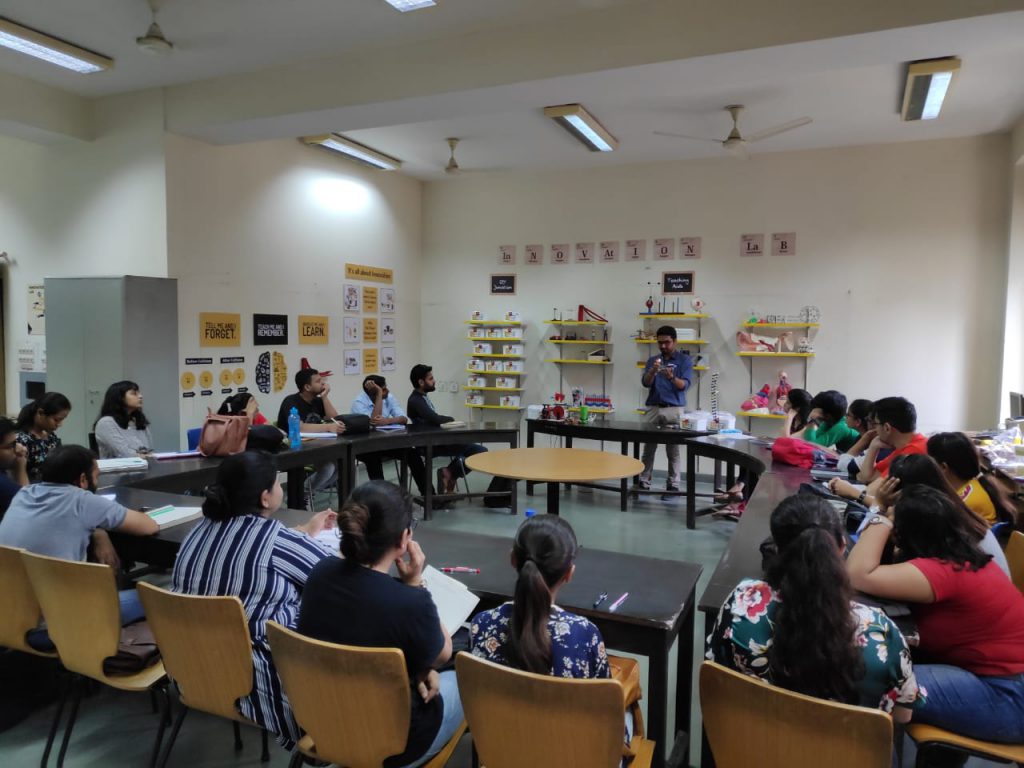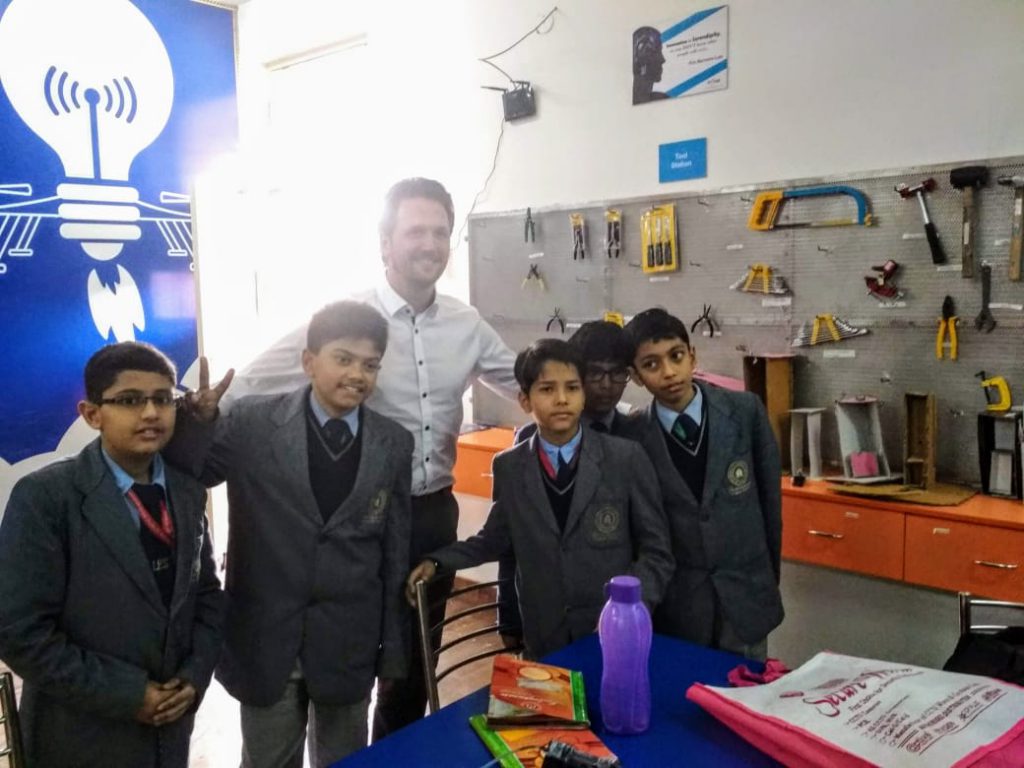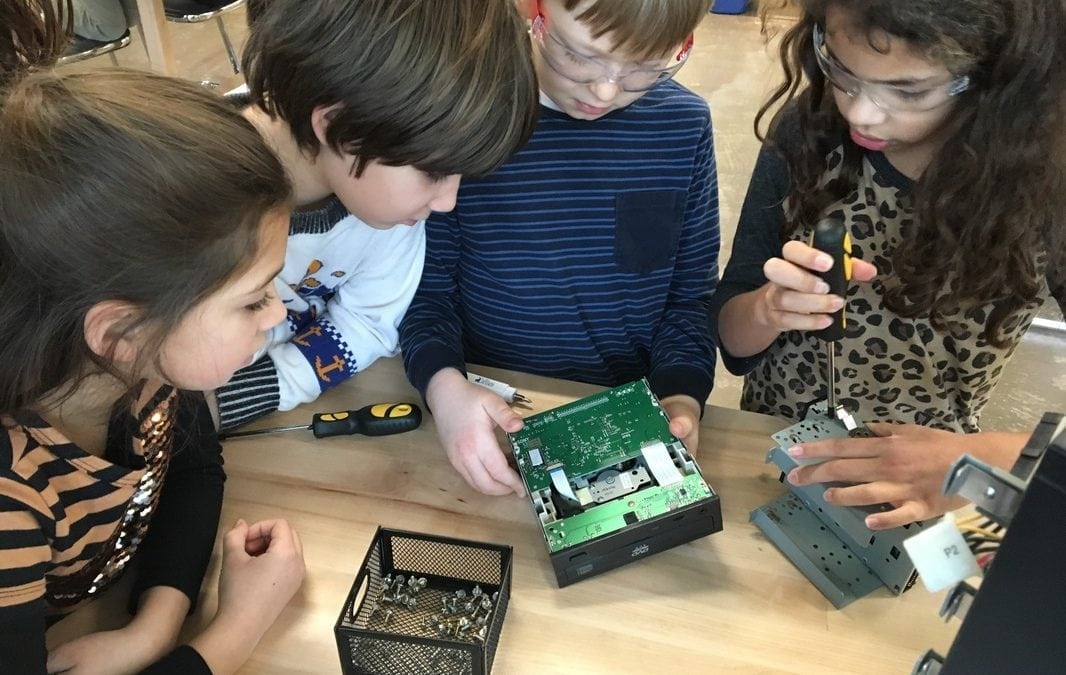In the modern education system, Atal Tinkering Lab refers to space where the children can experiment with, learn, develop and conceptualize different scientific ideas. Atal Tinkering Lab facilitates projects similar to DIY projects where the students are stimulated to apply the knowledge they have gained in the classroom. It not only helps the students to learn the real-life application and importance of the theories learned from their books but will also develop a natural kinship towards STEM. If the students are offered the ideal ambience and tools for practically experiencing the theories they learned in the classroom, they would also be encouraged to dig deeper and innovate something new. If we take a look at most of the scientific or engineering innovations, we would find that innovation happens when a few different theories are offered a blended together in a meaningful, focused way.
It is what exactly happens in an Atal Tinkering Lab where the students can practically experiment with the knowledge, try to restructure the theories learned in the classroom and see the transformed results.

The Atal Tinkering Labs not only have a proper set of equipment to facilitate experimentation but also a perfect peaceful ambience and the company of peers with the same interests that further speeds up the learning process and invites more attention.
Besides, they also offer a well-formulated initial phase of experimentation or tinkering that would then lead the students to learn, conceptualize and innovate on their own. Tinkering has already revolutionized the education structure of many developed nations with positive effects and now India is all poised to take advantage of Atal Tinkering Labs.
What is Atal Tinkering Laboratories (ATLs)?
Atal Tinkering Laboratories (ATLs) is one of the flagship schemes proposed under the Atal Innovation Mission (AIM). The other schemes under AIM are:
• Formation of Atal Tinkering Laboratories in eligible schools
• Establishment of New Incubation Centers
• Improving the present incubation centre to meet the high standards of quality
The main idea behind setting up of ATLs is encouraging the young students to understand STEM (Science, Technology, Engineering, and Math) concepts practically and creatively using the specific tools and equipment. The approach is aimed at eliminating the limitations caused by monotonous classroom learning and using only textbooks as a reference without any exposure to a practical approach.
The students would work with the specific tools and equipment to explore the practical relevance of STEM theories and concepts. To further encourage the children to exhibit their acquired talent, the timely competitions will also be held where students can exhibit their skills and talent in the form of various relevant projects.
The ATL’s will encourage the young minds to combine the creativity and logic by offering them do-it-yourself kits that would contain the equipment related to robotics, electronics, science, 3D printers, sensors, etc. The eligibility to apply for ATLs is very vast which includes Government organizations, schools managed by local bodies or private trusts. However, 25% of ATLs would be reserved for Government Managed schools.

Why the schools need Tinkering Labs?
STEM is a group of subjects comprising of science, technology, engineering, and mathematics. In many cases, it gets quite monotonous to teach these subjects inside the classroom only with the help of textbooks. These subjects, because of their very structure, are complex and may also appear convoluted.
• The theories, principles, properties, theorems and various tenets presented by STEM may seem convoluted for many students. So, the general take an easy way and simply mug up these things during examination time.

• No wonder many of the high-grade students are unable to remember even the basic STEM texts and reference they read in lower grades
• Because of the above 3 points, the foundation of STEM is quite weak in many students and over a while, they are detached from the subject (s) due to limited loyalty
• One of the major challenges posed by traditional classroom learning (through textbooks) is that even the students that can join the relevant fields of engineering, science or mathematics are limited to professional requirements of the job rather than developing an innovative approach
• The lack of innovative approach in STEM subjects limits the candidates from taking full advantage of their potential
While working with relevant tools and helpful ambience, the students can:
• Learn the complex aspects of STEM subjects in a more direct and human way
• Engaging multiple senses for practically experiencing the concepts of STEM subjects help the students to retain the different aspects of the topics
• Do-It-yourself ambience helps the students to develop a natural inclination towards “innovating” rather than sticking to the limitations of learned words
• The very structure of Atal Tinkering labs allows the students to perfectly blend the left (logical) and right (creative) brain. It helps the students to develop a natural “liking” towards their subjects.
 26846
26846


